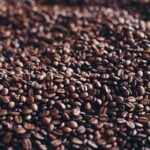Food Databanks Celebrating World Wholegrain day with a blog!

19th November is International World Whole Grain day, a better source of multiple nutrients and dietary fibre, than Refined Grain Day (30th February, I think). Seems like a good day to bundle together a few facts about whole grains, fibre and bread.
What is a whole grain? It’s a grain of any cereal, (e.g. wheat, rice, barley, maize, rye, oats) that still contains endosperm, germ, and bran. Despite the importance of including whole grains in the diet, many consumers prefer foods made from refined wheat flour such as white bread. To make refined or ‘white’ flour, wheat grains are milled, a process that removes the outer bran layers of the grain (which contain most of the fibre as well as other nutrients) from the inner tissue which is mostly starch.
What about nutritional differences? Using our online UK Composition of Foods data we have created a table of selected nutrients, including fibre and starch, comparing some wholegrain and refined foods. We’ve also included folate and vitamin B6 just to show how processing and fortification can affect levels.
| | Carbohydrate g/100g | Starch g/100g | Sugar g/100g | Fibre g/100g | Folate µg/10g | Vit B6 mg/100g | |
| White sliced bread | 46.1 | 42.7 | 3.4 | 2.5 | 25 | 0.08 | |
| Wholemeal bread | 42.0 | 39.3 | 2.8 | 7.0 | 40 | 0.11 | |
| White rice, long grain, boiled | 31.1 | 31.1 | trace | 0.5 | 4 | 0.03 | |
| Wholegrain rice, boiled | 29.2 | 29.0 | 0.1 | 1.5 | 7 | 0.04 | |
| Bran flakes cereal | 73.3 | 52.3 | 21.0 | 12.8 | 367* | 1.40* | |
| Wheat bran | 20.6 | 18.3 | 2.3 | 41.3 | 76 | 1.15 | |
| Wholemeal flour | 69.9 | 68.5 | 1.4 | 10.1 | 27 | 0.5 | |
| White flour, plain | 80.9 | 80.3 | 0.6 | 4.0 | 16 | 0.18 | |
| Data from McCance and Widdowson’s Composition of Foods Integrated Dataset https://quadram.ac.uk/UKfoodcomposition | *Fortified |
How much fibre should we eat? Dietary fibre consists of carbohydrate compounds that are not digested in the small intestine and have physiological health benefits. A low fibre intake is associated with constipation and some gut diseases such as bowel cancer. In the UK most people do not eat enough fibre (the average intake is 17.2g/day for women and 20.1g/day for men). The recommended average intake for adults is 30g fibre per day. From the table above, you can see you would have to eat 12 slices of wholemeal bread or 33 slices of white to reach the target (please don’t, have some fruit and veg as well!). According to the National Diet and Nutrition Survey, bread is bought by 99% of British households – that’s around 12 million loaves each day. Approximately 75% of the bread we eat is white and sandwiches are thought to account for 50% of overall bread consumption.
Fortification of all UK produced flour (except wholemeal) became a legal requirement after the Second World War to improve the health of the nation because some of the population were missing out on essential nutrients and vitamins. Flour was chosen since most households ate bread or flour products daily. It is still mandatory to fortify white and brown flour with: iron, thiamin (vitamin B1), niacin, and calcium carbonate.
What about “resistant starch”? Although starch is an important source of carbohydrate in our diet, much of the starch in refined food products tends to be easily accessible and rapidly digested in our upper gut, which may not be ideal for sustaining energy over prolonged periods of time or for maintaining healthy blood sugar levels. However, a small portion of the starch in wheat is resistant to digestion in the upper gut (resistant starch) and is an important component of dietary fibre. Brittany Hazard’s research group at QIB https://quadram.ac.uk/brittany-hazard/ and JIC are currently using crop genetics approaches to create new types of wheat that produce more resistant starch. They are also trying to understand how these new wheat starches behave in food products like bread, and the potential impacts they could have on health outcomes. The researchers hope that one day the new starch traits in wheat will be used to develop healthier wheat varieties and ultimately healthier foods for consumers.
Final Fact: It takes around 350 ears of wheat to make enough flour for one 800g loaf of bread.

Additional Information Sources: British Nutrition Foundation Flour Advisor Bureau (FAB) National Association of British and Irish Flour Millers & A slice of bread weights on average 36g: Food Standards agency Portion size book










